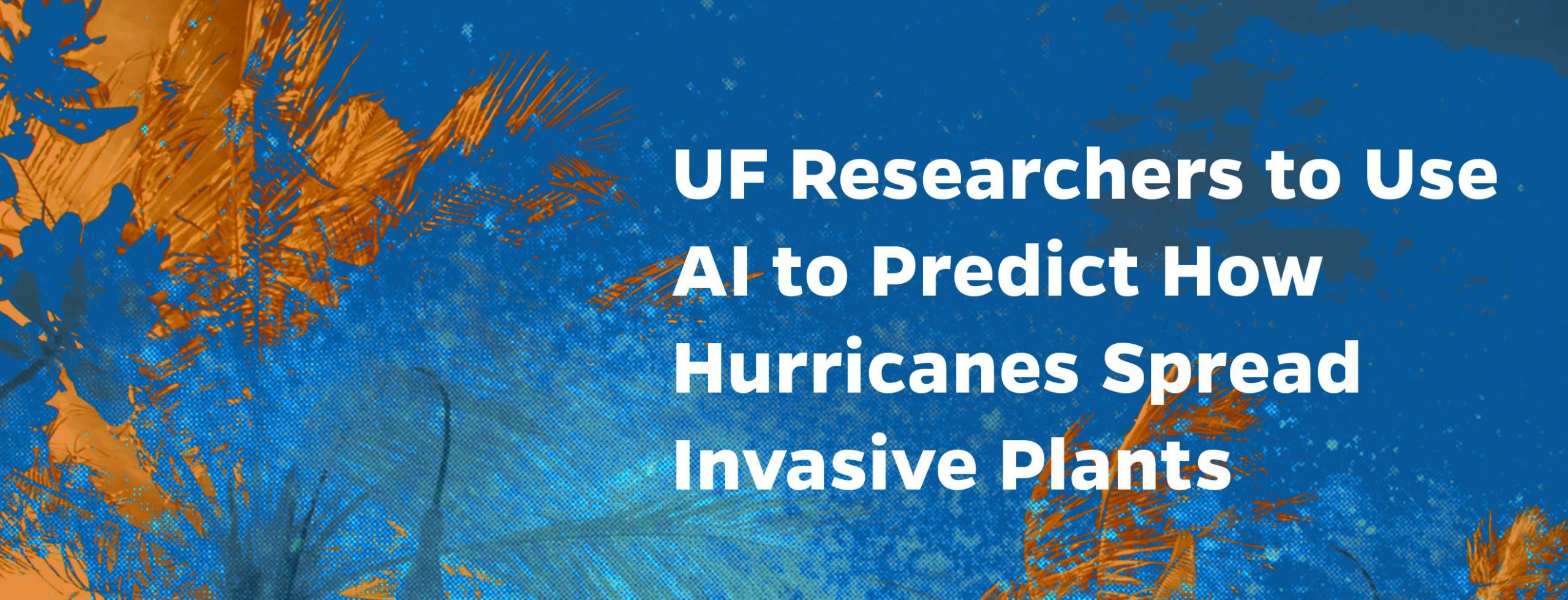UF Researchers to Use AI to Predict How Hurricanes Spread Invasive Plants
Courtesy of UF/IFAS
Written by Brad Buck
Scientists project hurricane intensity and frequency will increase with climate change. That leads researchers to want to better predict how storms will disperse and establish nonnative plant invaders.
Knowing where invasive plants spread will always be useful. But it may become especially handy soon as the National Hurricane Center is considering moving the official start of the Atlantic hurricane season two weeks earlier, starting it May 15, instead of June 1. Tropical Storm Arthur formed May 16 last year, marking six straight years a named storm formed before June 1.
This new information on invasive plants will come from a University of Florida research team gathering data by using artificial intelligence (AI).
UF researchers led by Luke Flory are using a combination of on-the-ground plant research and hyperspectral sensing to evaluate the effects of hurricanes on Brazilian peppertree and Old World climbing fern. These are two of the most widespread and problematic invaders in South Florida, including such large areas as the Big Cypress National Preserve and Everglades National parks, and hurricanes may disperse seeds and spores to new habitats.
Flory and his team want to examine the post-hurricane conditions with remotely sensed data that can be used to map the distribution of invasive plants.
“If we also can predict how hurricanes might alter the distribution or spread of invasive plants, then we can plan for when, where and how much more of the invader there might be after a storm,” said Flory, a UF/IFAS associate professor of ecology, in the agronomy department. “If resources can be allocated ahead of time, or at least very soon after a storm, then we can more effectively and efficiently manage invasions.”
Hurricanes have two potential effects on plant invasions, he said.
First, the storm can create conditions that are better for invasive plant establishment and growth. For example, storms can blow over native trees, or trees might be harmed or killed by saltwater intrusion. That increases the availability of light and other resources for other species, including invaders.
Second, invasive plant seeds may be dispersed by the storm.
“Together, the disturbed conditions created by the storm and the dispersal of seeds could provide the perfect situation for the spread of invasive species,” Flory said.
To gather their data, which will come from the hyperspectral sensor, Flory and his team will combine remotely sensed data with information on the ground.
He and his team will use a combination of what he calls “leaf-level” measurements obtained with a backpack unit and a handheld sensor, and a “near-surface” instrument that they plan to fly over the plots on a rigged cable system.
“The idea is that if we know the scale of the problem — including the current distribution of invasive plants — then management efforts can be better targeted to the most problematic areas — or areas that contribute most to spread,” Flory said. Those would include new, outlying groups of invasive plants that may be the next big population. “We also can target invasions in the most critical habitats — where there are threatened and endangered species.”
Other researchers on the team include Alina Zare and Paul Gader, both professors, and Dylan Stewart, a doctoral student — all with the Herbert Wertheim College of Engineering. Also on the team is Susan Meerdink, an assistant professor of geographical and sustainability sciences at the University of Iowa.


